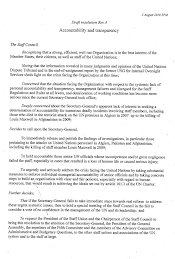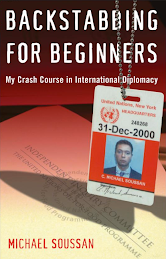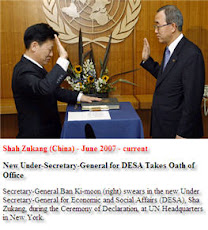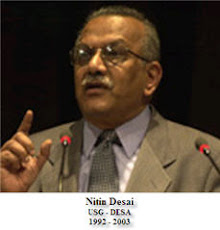
The Department’s ST/SGB states that the core functions of the Division are:
“(a) Monitoring national and global social trends through the collection, collation, analysis and interpretation of quantitative and qualitative data;
(b) Assessing the implications of these trends for societies and the world, and for social, economic and political strategy and policy, particularly of new issues which might require a policy response;
(c) Developing policies and programmes aimed at contributing towards the goals and objectives agreed to at the World Summit for Social Development, including the eradication of poverty, promotion of full employment and strengthening of social integration;
(d) Evaluating the effectiveness of public policy interventions aimed at social goals;
(e) Facilitating the negotiation of agreed positions, resolutions, international standards and norms through the Commission for Social Development, the Economic and Social Council, the General Assembly or other intergovernmental forums, notably the special session of the General Assembly in 2000;
(f) Supporting and facilitating United Nations system-wide cooperation and programme coordination on social issues;
(g) Promoting the exchange of information and ideas by the facilitation of dialogue among Governments about goals, strategies, policies and programmes, and encouraging such dialogue between Governments and civil society;
(h) Advocating recognition of special needs, such as those of the poor or unemployed, and of groups requiring specific support, such as the disabled, older persons, youth, indigenous people and ethnic minorities;
(i) Providing advisory services to Governments on request about social policies and programmes aimed at contributing to development.”13
DSPD’s proposed programme budget for the 2010-2011 biennium was USD 20,146,200 million, comprised of USD 17,750,200 million in regular budget (RB) and USD 2,396,000 million in extra-budgetary (XB) resources. For 2010-2011, the Division proposed 61 established posts, 60 of which to be supported by RB (40 Professional and 20 General Service).14 For the 2010-2011 biennium, DSPD’s financial resources were estimated to be 10.5 per cent of the total RB and 1.8 per cent of the total XB financial resources available to DESA.
The broad scope of substantive areas addressed by DSPD, along with limited resources, challenged the Division’s effectiveness
The broad scope of themes and the current distribution of resources presented challenges to deeper substantive involvement and engagement with stakeholders
40. The Division covered a broad range of thematic areas with 61 posts (See Annex 4 for selected activities, documents and instruments that it undertook). The Division’s Social Perspective on Development Branch covered issues ranging from poverty, employment, cooperatives, microfinance and social dimensions of the New Partnership for Africa’s Development. The Social Integration Branch handled social groups’ issues including family, youth and older persons. In addition, the Division also served as the secretariat for entities handling issues of persons with disabilities and indigenous people and provided support to NGOs and governments through its technical cooperation work. The Division’s work encompassed supporting the sessions of intergovernmental bodies and expert groups, producing numerous reports, supporting multi-stakeholder events, facilitating interagency working groups, distributing newsletters, among other functions. In addition, the Division’s support for 11 international days and two international years also demonstrated its engagement and advocacy of a wide range of social development issues in the international arena.36 In many cases, only 2-3 staff were responsible for a wide range of activities.
41. Approximately half of the 38 stakeholder interviewees recommended that the Division needed to have more human and financial resources to carry out its numerous mandated activities in a meaningful way. Stakeholders offered examples of the large amount of work undertaken by DSPD staff. These included two staff members responsible for registering and coordinating all NGO involvement in the numerous intergovernmental and expert bodies serviced by the Division, and two staff members for handling all duties related to the UN Programme on Ageing. Two staff who worked on the theme of older persons were responsible for servicing and supporting the Open-ended working group on Ageing for the purpose of strengthening the protection of the human rights of older persons, preparing documents related to the Follow-up tothe Second World Assembly on Ageing and the Review and appraisal of the Madrid International Plan of Action on Ageing, organising the International Day of Older Persons, distributing an e-newsletter, conducting technical cooperation projects, supporting multi- stakeholder events, and interacting with United Nations entities, NGOs, and other stakeholders. One stakeholder commented that they wanted more interaction with the UN Programme on Ageing and wanted DSPD to be more of a catalyst; however, he acknowledged that his organisation has over ten people while DSPD had only one person dealing with the same issue. The lack of resources also clearly emerged as the most frequently cited concern in the Division staff survey.
42. Moreover, in the current biennium, the Division has had to undertake unplanned work without a corresponding increase in resources. For example, in connection with the International Year of Youth from August 2010-2011, the Division has had to prepare and execute a wide range of additional activities, from organising briefing sessions and side events, to servicing consultations and publishing additional reports.37 Stakeholders commented that it was burdensome to expect the Programme on Youth to implement the International Year of Youth with the current funding and capacity. Similarly, in connection with the UN Programme on Ageing supporting the Open-ended working group on Ageing for the purpose of strengthening the protection of the human rights of older persons, as established by a General Assembly resolution in 2010, two staff members have had to undertake numerous additional activities in preparation for the forthcoming first working session of April 2011.38 Stakeholders commented that it was an “overwhelming” task for two staff members to coordinate the work undertaken by this subdivision even before this additional responsibility. Finally, the Division’s mandates have expanded to include the production of additional reports such as the “Follow-up to the Millennium Summit: Legal Empowerment of the Poor and Eradication of Poverty” and the “New Global Human Order.”39 The drafting of these reports was not part of DSPD’s approved biennium work programme and has not been accompanied by additional resource allocations to support and facilitate their completion.
43. In addition, these challenges were compounded by the perception held by staff and stakeholders that, in general, social issues ranked lower in priority than economic issues.40 A DSPD manager commented, “Social issues are way down on the agenda, [there is] constantfrustration to get the attention and resources in the Organisation, but also at the country level. Social affairs ministries are less pre-eminent.”
44. While stakeholders acknowledged that they understood why DSPD could not be more engaged with the substantive matters, they expected more involvement from DSPD. Stakeholder interviewees commented that although they valued the fora that DSPD provided by facilitating meetings, they wanted meetings to extend beyond information sharing or “tour de table.” They expected DSPD to take more of a leading role for further collaboration. For example, some commented that the interagency network on youth should facilitate more input from civil society organisations and go beyond functioning as a platform to exchange information. Others wanted more collaboration between different sectors rather than having separate units within DSPD dealing primarily with a particular theme.
45. Notwithstanding the resources and mandate limitations described above, 68 per cent of DSPD staff somewhat disagreed or strongly disagreed that DSPD utilised its staff and financial resources in the most efficient manner. Similarly, a 2009 inspection conducted by IED of DESA’s human resource and management practices found that half of DSPD staff strongly or somewhat disagreed that the allocation of tasks was fair and equitable, while 52 per cent strongly or somewhat disagreed that there was little duplication of work within the Division.41 Stakeholder survey and interview comments suggested that DSPD needed to make fuller use of its existing resources, to take better advantage of its networks, and to leverage its partnerships with other United Nations entities to help with resource constraints. Stakeholder interviewees commented that one of DSPD’s strongest assets was its networks and their use needed to be maximised particularly in times of resource constraints. In its dissemination practice document, the Division suggested developing closer collaboration with civil society organisations to help connect with a wider audience.
The Division’s organisational structure, management and vacancies presented further impediments to its work
DSPD’s segmented structure reduced effectiveness of communication and cooperation within the Division
46. The Division’s structure, consisting of two branches, two units and two secretariats, presented challenges to its work. Each of these subdivisions handled different substantive matters and the Social Integration Branch was further divided into staff responsible for different social groups. According to DSPD management, the fragmentation of the Division’s work was partly driven by the segmented needs of the different constituencies it served. To address this, it made efforts to organise events such as expert group meetings that would incorporate more then one constituency (for example, youth and family); however, DSPD remarked that these efforts were not fully embraced by the respective constituencies. At the same time, staff commented in interviews that the Division could be fostering further collaboration, particularly across the two branches and also within the Social Integration Branch. Some stakeholder interviewees also suggested that the Division could improve by further incorporating multiple constituencies into its work.
47. In general, DSPD staff interviewed and surveyed were of the opinion that the current organisational structure of the Division was an impediment to overall efficiency of the Division. Staff commented on the lack of awareness and interaction among subdivisions with some interviewees commenting that the Division consisted of “silos” and “has created a culture of I’m on my own, I don’t share.” Moreover, almost half (46 per cent) of staff surveyed strongly or somewhat disagreed with the comment that the organisational structure of the Division facilitated its work, and 42 per cent of staff strongly or somewhat disagreed that the Division had an internally shared vision of the best way to implement its objectives.
48. Staff interviewed remarked that the current structure did not facilitate collaboration between the various components. Staff also rated the communication between the Division and partners within and outside the United Nations system as being more effective than the internal communication in the Division.42 They stated that although interpersonal relationships on an individual and informal basis were effective overall, the interaction between the different subdivisions did not occur on a systematic or frequent basis. Some staff suggested using the existing human resources with more flexibility in line with the priorities of the work of the Division and considering each subdivision’s peaks and down times. They commented that the structure, however, did not facilitate more movement across the subdivisions.
49. The Division has made efforts to enhance internal communications. One tool that helped staff members become more aware of each others’ work was the Division’s contribution to a weekly DESA-wide newsletter. The Office of the Director compiled submissions by the various subdivisions on a weekly basis, which were circulated to the entire Division. In 2011, DSPD also implemented a Division-wide work plan monitoring tool for programme management that provided an overview of the Division’s work while also indicating details such as the responsible staff and timelines. Nevertheless, staff interviewees commented that there could be more frequent Divisional and subdivisional meetings, and increased intra-divisional communication.
The prolonged vacancy of the Division’s Director and high vacancy rates created some inefficiencies and low staff morale
50. The Division has not had a Director since June/July 2008. In the interim, officers-in- charge, acting Directors, and one Assistant Secretary-General have been appointed as overseers of the Division. These temporary heads were appointed by the Office of the Under-Secretary- General (OUSG) on an ad-hoc and short-term basis to ensure the continuation of the functionality of the Division. The unanticipated delay in selecting a Director led to multiple short-term reappointments of the senior management of the Division which created challenges on multiple fronts. Critical strategic decisions were put on hold. Additionally, the absence of a Director also meant that the Division could not be represented at the Director level at high-level meetings and conferences such as the 49th Session of the CSocD. Finally, this prolonged vacancy has also negatively affected staff morale and led some stakeholders to infer that social issues occupy a relatively lower importance among the issues on DESA’s agenda.
51. The Division’s leadership was also perceived to be weak. In a 2009 inspection conducted by IED of DESA’s human resource and management practices, 39 per cent of staff rated the overall staff morale in the Division as excellent or good, 26 per cent rated it as fair and 35 per cent rated it as poor or very poor.43 In the same inspection, only 39 percent rated the overall management of the Division as excellent or good, and 22 per cent rated it as fair. These perceptions have remained stable. DSPD staff surveyed by OIOS in 2010 commented that one of the Division’s greatest challenges was the lack of effective management and strong leadership.
52. The Division was also challenged by high vacancy rates.44 At the beginning of 2010, 15 Professional level posts (or 36 per cent of the total 42 Professional posts) and one General Service post (5 per cent of a total of 19) were vacant. Moreover, all positions at the D-level were vacant for various periods during the year. The Division filled most of these vacancies on a temporary basis and made considerable efforts to fill the vacancies permanently.45 Overall, the high vacancy rate in 2010 had a serious impact on the workload of the Division particularly with respect to the D-level positions. By the end of the year, the Division’s efforts had succeeded in bringing the vacancy rate considerably down and reported having reduced the vacancies to four Professional posts and two General Service posts. Recruitment delays were due in part to systemic limitations resulting from the transition from Galaxy to Inspira.
53. In addition to the challenges related to high vacancy rates, some staff were also concerned with staff selection and promotion and the perceived lack of transparency in the staff selection decisions. This was expressed in staff interviews and also in the 2009 inspection conducted by IED, where the majority of staff strongly or somewhat disagreed that in the Division decisions on staff selection were made in a transparent manner.46 Additionally approximately half strongly or somewhat disagreed that staff selection had resulted in the competencies and skills required for the implementation of the work programme.47
The Division did not consistently measure the impact of its work or share good practices and lessons learned
54. The Division spent significant resources on research and analysis and its publications. Other than measuring the percentage of proposed recommendations used in the formulation of resolutions and the number of visits to and downloads from the Division’s website, however, it did not have mechanisms that systematically measured the impact of its publications. In this regard, the Board of Auditors recently recommended that “DESA plan for mandatory documents aimed at the general public be the subject of an evaluation of results,” via readership surveys and by drawing up indicators of achievement for its publications.48
55. In addition, the Division did not systematically share good practices and lessons learned. The absence of knowledge sharing was reflected in the 2009 inspection of DESA’s human resource and management practices; a majority of staff surveyed disagreed that the Division had a system in place to share and retain knowledge and institutional memory or that lessons learned were effectively captured and shared with staff, and almost half disagreed that critical work processes in the Division were documented well.49 Staff interviewees also commented that the Division did not have an effective system for information sharing. Without good practices and lessons learned being systematically shared, the Division faces an increased risk of the loss of institutional knowledge which negatively affects efficiency and effectiveness as more time has to be spent on similar tasks and opportunities to improve upon past performance are not maximised.






















No comments:
Post a Comment